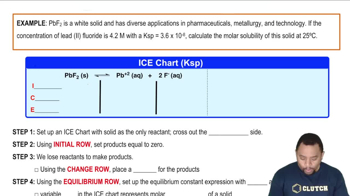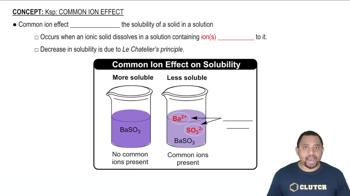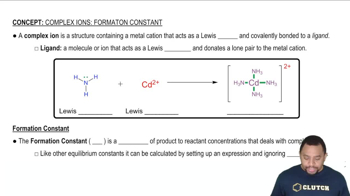Here are the essential concepts you must grasp in order to answer the question correctly.
Molar Solubility
Molar solubility refers to the maximum amount of a solute that can dissolve in a given volume of solvent at a specific temperature, expressed in moles per liter (M). It is a crucial concept in understanding how substances interact in solution and is often determined through equilibrium expressions involving solubility product constants (Ksp). In this case, we need to calculate the molar solubility of Cr(OH)3 in the presence of NaOH.
Recommended video:
Common Ion Effect
The common ion effect describes the decrease in solubility of a salt when a common ion is added to the solution. In this scenario, the addition of NaOH introduces OH- ions, which shifts the equilibrium of the dissolution of Cr(OH)3, reducing its solubility. Understanding this effect is essential for calculating the new molar solubility in the presence of a strong base like NaOH.
Recommended video:
Formation Constant (Kf)
The formation constant (Kf) quantifies the stability of a complex ion formed in solution. For Cr(OH)4-, the Kf value indicates how favorably Cr(OH)4- forms from Cr(OH)3 and OH- ions. This constant is critical for determining the extent of complexation in the solution, which influences the overall solubility of Cr(OH)3 when NaOH is present.
Recommended video:
Complex Ions and Formation Constant
 Verified step by step guidance
Verified step by step guidance


